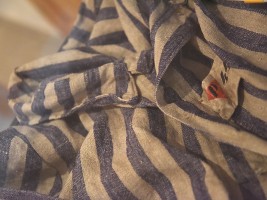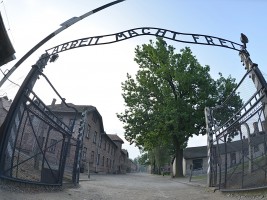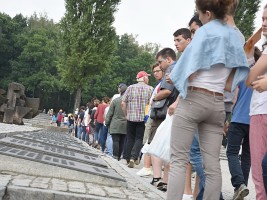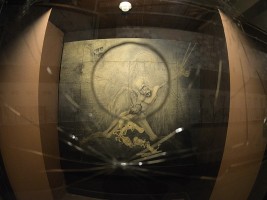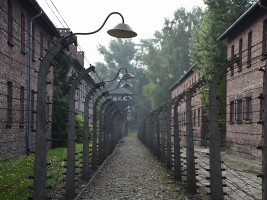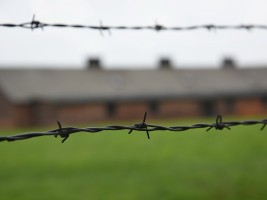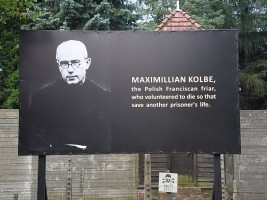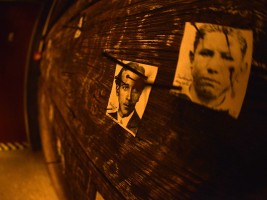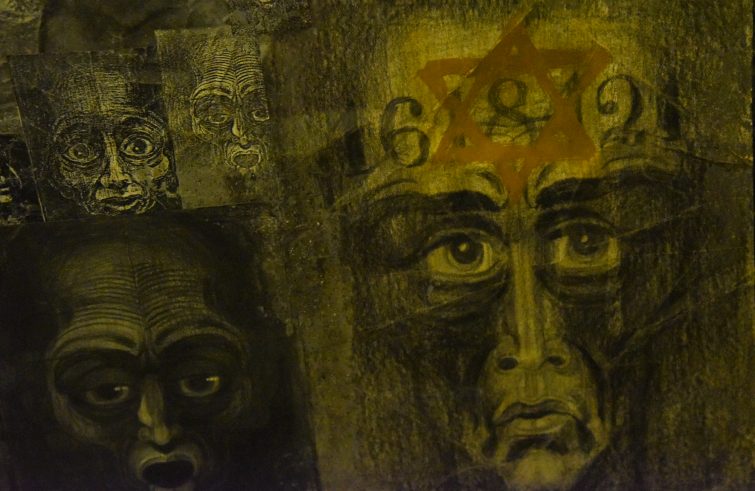
The UN General Assembly chose to designate Jan 27 as the International Day of Remembrance of the Shoah because Auschwitz extermination camp was liberated on 27 January 1945. The Nazi concentration camp complex built in Poland became operational on 14 June 1940, when prisoners were brought there by train. Marian Kołodziej was in the first transport of prisoners that crossed its gate. Born in Raszkow on 6 December 1921, Kołodziej was a Catholic scout who  attempted to enrol in the Polish army in France, only to be arrested by the Gestapo as a conspirator and sent to Auschwitz on the first train. His is a very unique experience, in fact Kołodziej, immediately after the end of World War II, became a famous theatre scenographer married to ballerina Halina Słojewska. On two occasions he designed the altar where John Paul II celebrated Holy Mass during his visits to Poland, and for 50 years he never spoke to anyone about his experience in Auschwitz.
attempted to enrol in the Polish army in France, only to be arrested by the Gestapo as a conspirator and sent to Auschwitz on the first train. His is a very unique experience, in fact Kołodziej, immediately after the end of World War II, became a famous theatre scenographer married to ballerina Halina Słojewska. On two occasions he designed the altar where John Paul II celebrated Holy Mass during his visits to Poland, and for 50 years he never spoke to anyone about his experience in Auschwitz.
“I was wearing a mask”.
he said before dying on October 14, 2009 in Gdansk, that conferred him honorary citizenship. A physiological short circuit shattered the mask of the Polish artist: 50 years after the end of the war he had a stroke that restored all the memories he had tried to remove and, with them, the promise he had made to his fellow prisoners, namely,
the commitment to chronicle what had happened in the event he was saved.
- Foto Calvarese/SIR
- Foto Calvarese/SIR
- Foto Calvarese/SIR
Half of his body was paralyzed and he began to draw as a physiotherapy exercise but, above all, to try to channel his memories into small pencil marks, the only ones he could make, written on pieces of paper that he would subsequently paste together to compose a meaningful image. In Kołodziej’s mind, the memories of Auschwitz were like a whirlwind that he conveyed in a maze-like pattern. Precisely for this reason, the exhibition of his memories is entitled “Clichés of Memory, the labyrinths of Marian Kołodziej” on display at the St Maximilian Kolbe Centre run by the Missionary Sisters of the Immaculate in the small village of Harmeze. Upon entering the exhibition, and until the exit, the visitor is immersed in a labyrinth-like installation, whose sceneries are not sequential but lead viewers to lose their bearings and experience a journey through the artist’s memory. With him we enter the wagon that transported him to Auschwitz, amidst photos and drawings designed to cause a state of anxiety that is only a prelude to the final destination of the transport. Amidst many names of different nationalities written with chalk on the wooden walls, we find the commitment made many years ago, translated into the words of poet Zbignew Herbert “You were saved not in order to live, you have little time, you have to give testimony.” A seemingly endless series of drawings well describes the state of anxiety of this man who would spend all his time drawing, from 7.30 in the morning to 10 in the evening, almost as if it were a form of penance for having remained silent until then, along with his own prayer which he himself describes,
“every pencil mark is a prayer for all those who have vanished in ashes.”
- Foto Calvarese/SIR
- Foto Calvarese/SIR
- Foto Calvarese/SIR
“This is not an exhibition, this is not art, these are words encapsulated in drawing. Please read these words that I was unable to utter for 50 years”: these are the artist’s own words, expressing his refusal to associate art with something as horrible as the account of a tragic period experienced by prisoners in extermination camps. This man-made apocalypse is depicted in various panels on which the passage of St. John the Evangelist stands out: “I looked, and behold, a great multitude which no man could number, from every nation, from all tribes and peoples and tongues, where the gate to hell is marked by the inscription “Arbeit macht frei”. In the multitude of identical bodies piled one on top of the other, as happened in the camp where prisoners had to sleep in the same position, emerges the figure of Father Maximilian Kolbe, number 16670, whom Kołodziej met when he sacrificed his life to save that of Francis Gajowniczek. Dirt, hunger, pain, cold, suffering, death, yet also friendship and solidarity, all this can be found in the artist’s works, as he seeks to remain a man in that camp that wanted to transform him, causing him to ask every day
“where is God”?
- Foto Calvarese/SIR
- Foto Calvarese/SIR
- Foto Calvarese/SIR
The artist felt that the answer would come from the prayers offered by people as they were publicly tortured, locked in cages or crucified on poles as punishment, but also from the words of Edith Stein, Jewish, philosopher, Carmelite nun, martyr, who wrote in her last book which remained unfinished in writing but ended with her existence as she entered Auschwitz’s gas chamber holding hands with her sister on 9 August 1942,
“We can only acquire the ‘Science of the Cross’ (title of her last book) by experiencing the Cross until the end; I felt this inner conviction from the very first moment. I repeat in my heart: ‘ave, O Cross, the only hope'”.


